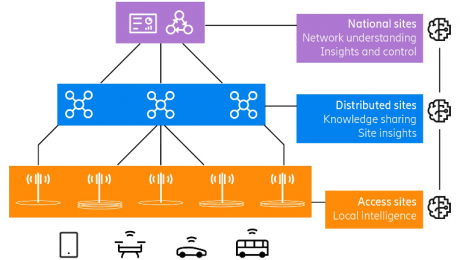The Role of Artificial Intelligence in 5G Network Automations
- March 9, 2021
- Posted by: Yunqi Ye
- Category: 5G Technologies
The Role of Artificial Intelligence in 5G Network Automations
March 8, 2021 Category: 5G Technologies
5G networks and services will be empowered by network automation and big data – two major areas related to Artificial Intelligence (AI). More than half of service providers (53%) have already charted out plans to fully integrate some aspect of AI into their networks last year, with 19% estimating complete roll out within a period of 3 to 5 years.
Network Automation
Network automation is the process of automating the configuring, managing, testing, deploying, and operating of physical and virtual devices within a network.
Big Data
The term “Big Data” refers to large data sets that are analyzed to extract insights that enhance decision making. The process of automation takes place when device procedures are executed as per pre-programmed instructions.
5G can be intelligently harnessed to generate huge amounts of data in a distributed and decentralized system. This Big Data can be used for multiple objectives in several layers of the 5G architecture, through both local and centralized manners as shown below.

Learning and decision making in large distributed networks (Source: Ericsson)
However, as the deployment of new services such as SD-WAN and NFV further enhance the complexity of 5G networks, service providers would need to enhance the astuteness of their planning, deployment and operations, to meet the ever-increasing customer demands.
A 5-Step Model to Network Automation
Based on the “People, Process and Technology (PPT) framework”, a 5-step model has been proposed by some vendors to smoothen network automation. The five steps are as follows:

5-Step Model to Network Automation
It is important to note that the above processes may not always progress sequentially; there may be some overlaps and deviations on the vendors’ or customers’ end which may result in a hybrid model.
Based on the above, network automation and transition may follow a similar model with phases:
- Manual Operations: Traditional networks, requiring human intervention.
- Automated Workflows: Design, execution, and automation of processes
- Automation, Tests, and Networks, as code: Trigger actions automatically. Proactive instead of reactive troubleshooting
- Continuous Processes, Continuous Pipeline: Automate build, testing, deployment & response like engineering teams. Move quickly in small steps for agility with accuracy.
- Engineering Outcomes: Simplicity, Network Reliability, Business Agility, Continuous Improvement, Positive Outcomes
CSPs’ Next Move: Enhancing Customer Experience through AI
An increasing focus on customer experience (CX) improvement is actively shaping the business strategies of communications service providers (CSPs) globally.
With market disruptions, declines in traditional revenues, increasing competition and changing customers’ expectations, CSPs will need to strive to make CX a focal point of effort, investment and performance evaluation throughout their business value chains.
CSPs who are able to embrace Big Data developments and new disruptive technologies to provide users with seamless and personalised experiences across various touchpoints will be best poised for success.
To sum up, AI will complement 5G by enhancing the performance and robustness of networks, while 5G networks will continue to accelerate AI use cases. ABI Research estimates that this technical duo will increase global productivity across adjacent industries by 5.8% in 2035, which is equivalent to US$11.4 trillion in 2035.
Follow us on LinkedIn to stay tuned to our weekly updates of the latest developments in the Telecom/IT industry and popular courses that we offer.
